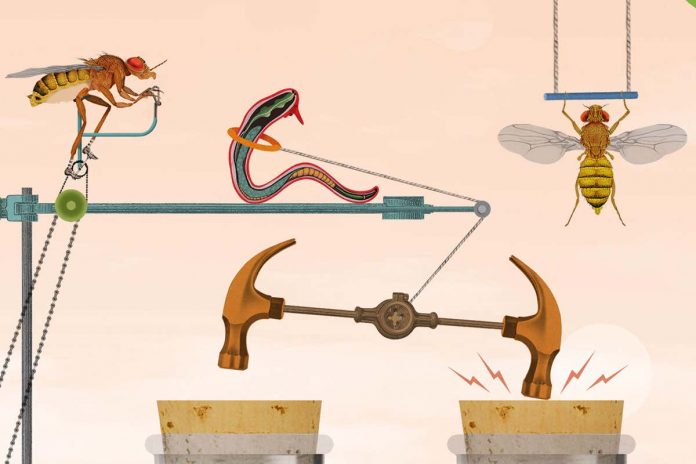Creepy-crawlies can provide unique insights into how exercise benefits humans – but how do you get a fruit fly to drop and give you 20 or a nematode to run a marathon?
Health
16 December 2020

RUN run run run run THUD run run run run run THUD. This is the steady beat of the Power Tower as it subjects a cohort of athletes to extreme fitness training. Each round starts with a vertical sprint up a smooth wall, before a jolt from the machine sends them tumbling to the bottom again. Hour after hour, hundreds are put through their paces. And wow, do they get results: stronger hearts, faster climbs, greater endurance and a metabolism wired to resist stress. Not bad for a small fly you would usually find haunting bananas or floating face down in your glass of Shiraz.
Fruit flies aren’t the first thing that springs to mind when you think of fitness training, but they are providing a surprising window on the biology of exercise. They aren’t even the strangest invertebrate hitting the gym. That medal goes to a tiny nematode worm called Caenorhabditis elegans whose transparent body allows scientists to see the physical consequences of activity in action.
But there’s a problem. You can’t just plonk these creatures in front of a workout video and tell them to feel the burn. So how do you get a fly to drop and give you 20 or a worm to run a marathon? Like any good personal trainer, you understand your client’s motivations and craft your workout accordingly. That’s where the Power Tower comes in – along with laser treadmills, electrified swimming pools and other unusual gym equipment. It isn’t just the invertebrates that benefit either. This fiendish research is generating unique insights into how exercise affects human health and ageing …











